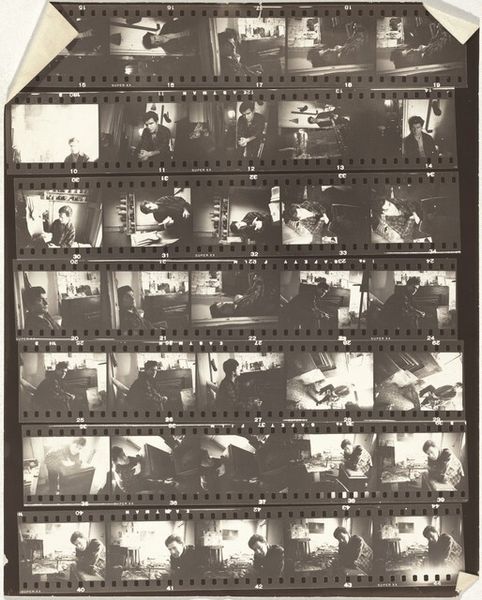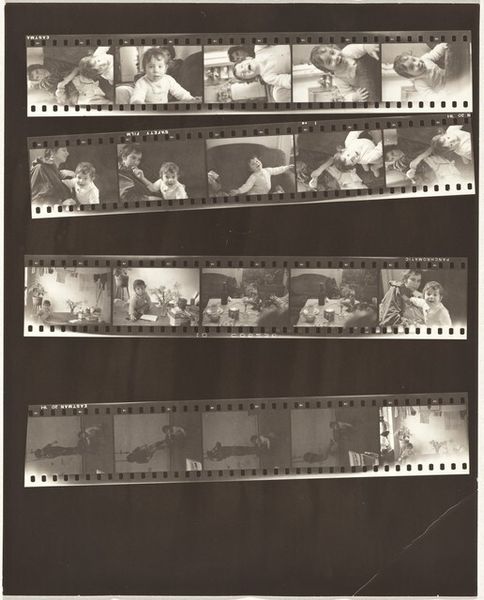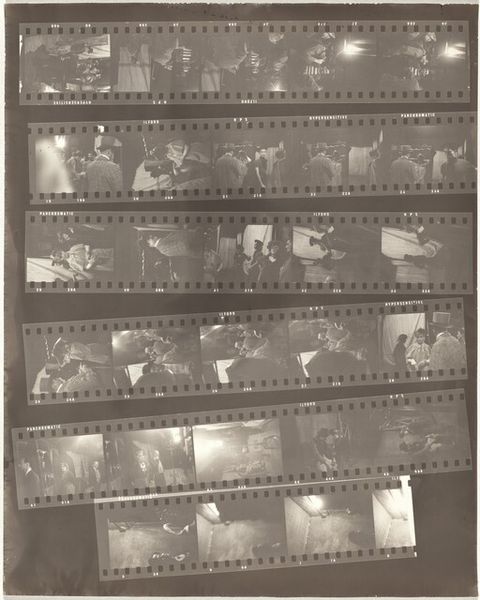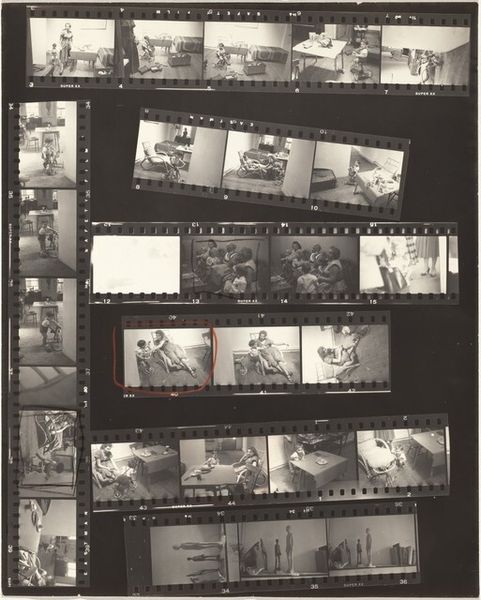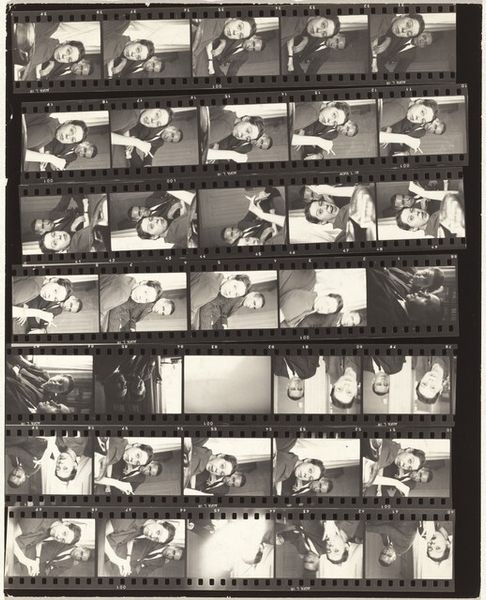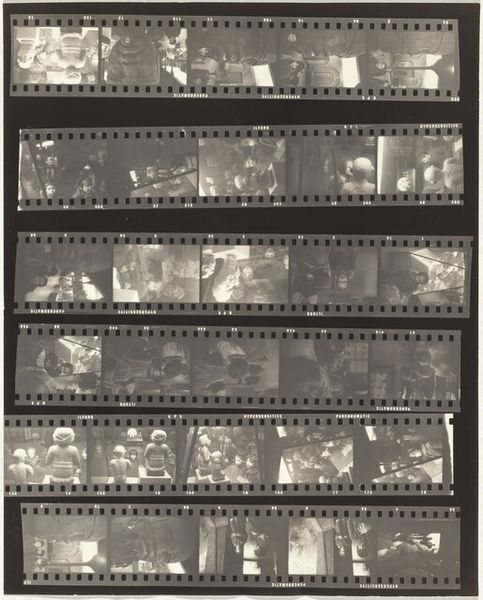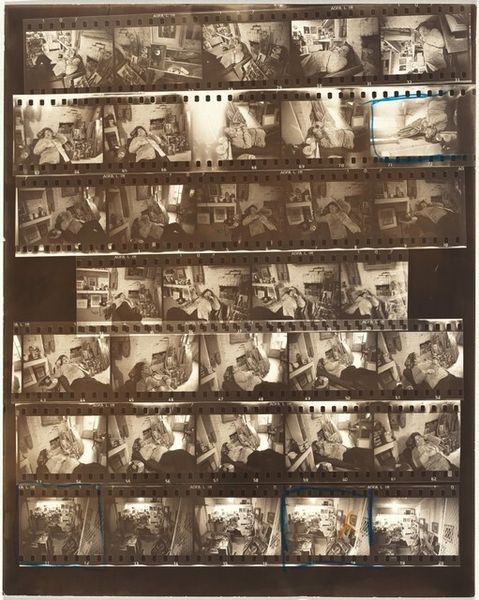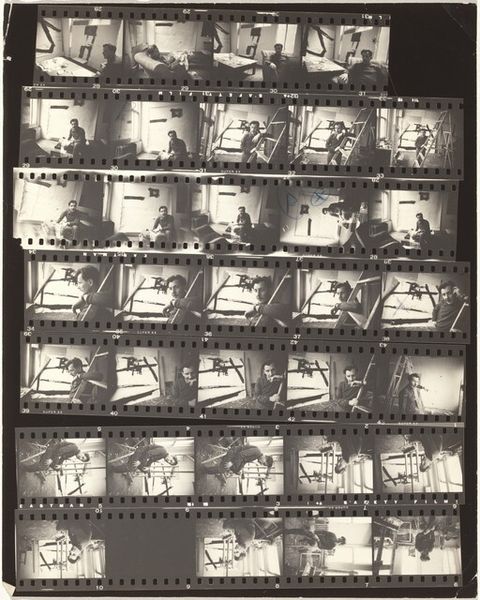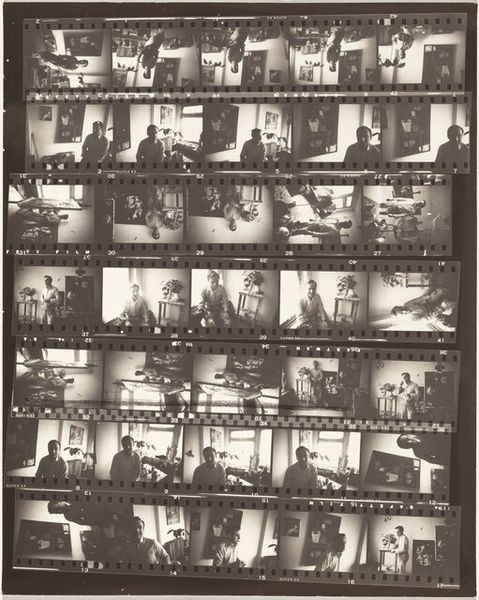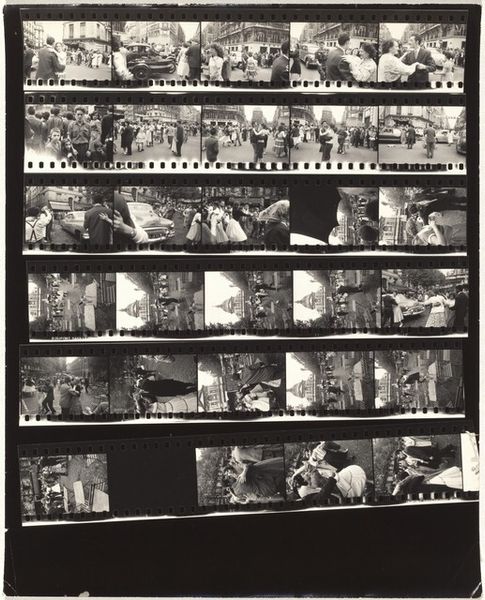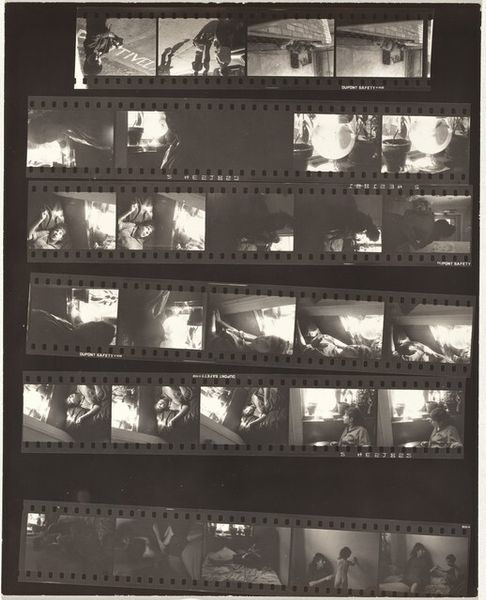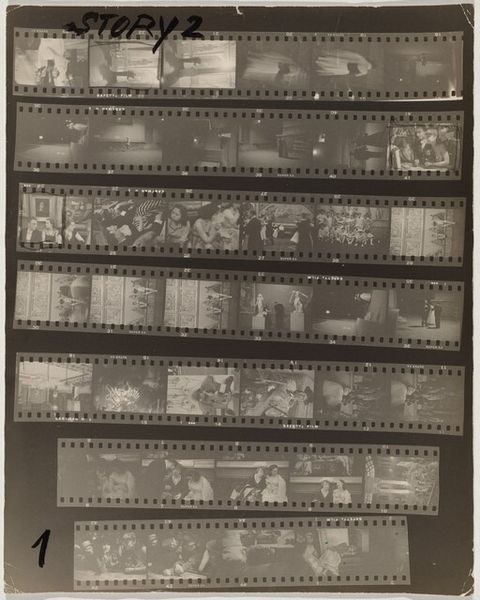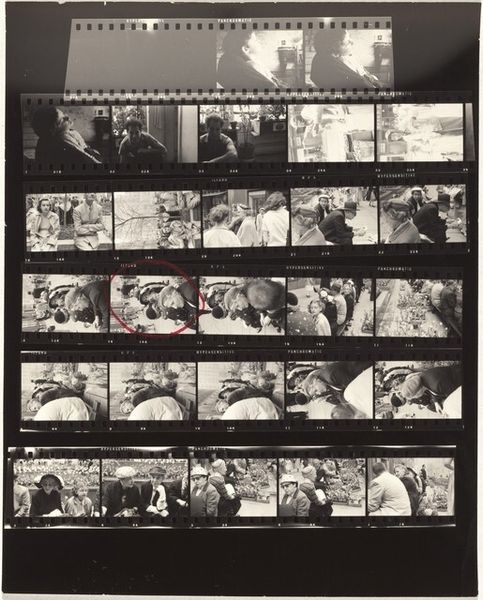
photography, photomontage
#
portrait
#
abstract-expressionism
#
organic shape
#
photography
#
photomontage
#
modernism
Dimensions: overall: 25.2 x 20.2 cm (9 15/16 x 7 15/16 in.)
Copyright: National Gallery of Art: CC0 1.0
Editor: We're looking at "John Grillo--Painters no number," a photomontage by Robert Frank, created sometime after 1953. The contact sheet offers us multiple perspectives of, I assume, the painter, John Grillo, with his artworks. The overall feeling is candid, and a bit fragmented. What catches your eye in this work? Curator: Well, immediately I’m drawn to the repetition and the varying perspectives. This creates a kind of visual rhythm, doesn't it? Frank isn't just documenting Grillo; he's constructing a narrative about the artistic process itself. Each frame offers a slight variation – a shift in Grillo’s pose, a different angle on the painting. The repeated images act like motifs. How do these repetitions affect the way you perceive Grillo and his work? Editor: It almost feels like he's trying to capture the essence of creation through multiple exposures. The process, not just the product, becomes visible. Does this method of photomontage carry a specific cultural significance relating to the arts, in this era of Modernism? Curator: Absolutely. Think about the shift from traditional portraiture. Frank isn’t presenting a singular, definitive image. This resonates with the artistic movements of the time that favored fragmentation, abstraction, a break from traditional representation. By choosing photomontage, he's not just portraying an artist, but also mirroring the evolving nature of art itself. The images remind me of the Cubist methods. Each frame, in conversation. Editor: That's a brilliant connection! So, it becomes less about a static portrait and more about a dynamic investigation. I hadn't considered that the technique itself held so much meaning. Curator: Precisely! It makes you wonder about the choices Frank made. The ordering, the angles...every detail contributes to a richer, more complex portrait of the artist at work, and, by extension, artistic creation.
Comments
No comments
Be the first to comment and join the conversation on the ultimate creative platform.
